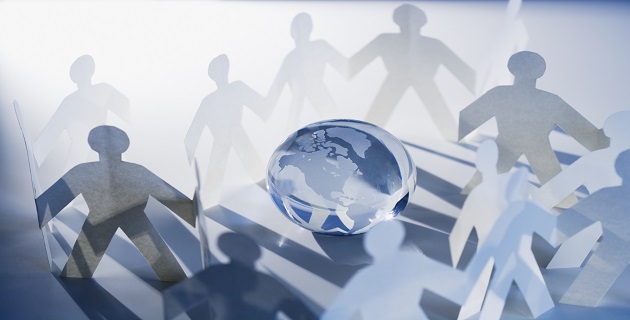As an engineer, it pains me to say this: standardization in human resource management hinders the development of diverse workplaces. I’m the first person to admit that I became an expert in process improvement just so I could come up with simpler ways of doing things. This means I would invent an entirely new design or process rather than go with what already existed — because I thought my way was more efficient and, therefore, less of a nuisance for me (with hard data to support my claims). Standardization is a cornerstone of simplification. However, in a fantastic display of irony, treating people equally with a standardized compensation and benefits package only complicates issues surrounding diversity and inclusion, or lack thereof, in the workplace.
As an engineer, it pains me to say this: standardization in human resource management hinders the development of diverse workplaces. Share on XAt a conference where I presented recently on preventing burnout in the fight for creating diverse, equitable, and inclusive spaces, I found myself speaking to an audience of human resource professionals. Through my interactions with them, I discovered they were fighting against burnout on multiple fronts. Not only were they running themselves ragged trying to figure out how to diversify their workforce, but they were also trying to figure out how to develop sustainable practices for maintaining a diverse workforce in the long-term so their results wouldn’t burn out as well.
The solution for both situations is the same: simplify. So how do we simplify without standardizing ourselves into a corner? We design a new process, of course.
My logistical brain loves repeatability and I’m at the front of the protest lines screaming for equal pay for equal work… at the same time, I fundamentally don’t believe there’s such a thing as “equal work” in the diversity arena. In my teachings about preventing burnout, I emphasize the importance of identifying and understanding that which makes us different from the majority. It’s bridging these gaps that leads to burnout–especially since it’s often the person from a historically marginalized group who’s building the bridge. When society normalizes certain looks and behaviors and categorizes them as the standard to which everything else should conform, it places the burden on those who are different to make accommodations to comply and make themselves acceptable.
When society normalizes certain looks and behaviors and categorizes them as the standard to which everything else should conform, it places the burden on those who are different to make accommodations to comply. Share on XThe problem is, every time we make an accommodation to try to fit in or be more readily accepted, we add stress to ourselves. This stress can come from any number of areas such as fear of being judged, anxiety from increased time restraints because of our added steps to prepare, or anxiety about the added financial burden we take on to make these accommodations. The wider the gap between us and what’s considered “normal,” the greater the stress to bridge that gap.
It’s in this context that we can understand how equal end results do not equate to equal work: For two people who come from vastly different circumstances to produce the same final product, it’s not enough to compare the end result to determine the effort that went into supplying it. Somebody who rides public transportation an hour and a half one way to get to work every day isn’t operating under the same conditions as someone who drove ten minutes in their own vehicle.
Equal end results do not equate to equal work: For people who come from different circumstances to produce the same product, it’s not enough to compare the end result to determine the effort that went in. Share on XIn order for organizations to provide adequate support in offsetting the added stressors that employees from historically marginalized groups face, they’re going to have to do something outside of the acceptable norm: they’ll have to consider their employees as people who exist outside the walls (figurative and literal) of the organization. By taking a look at the demographics of their workforce, they can use research around equity to determine a baseline for the compensation and benefits that will support their population. It’s all a beautiful decision tree flowchart from there: inequities identified across demographic differences present in the workforce can guide the organization’s approach to bridging these gaps.
In order for orgs to provide adequate support to employees from historically marginalized groups face, they’ll have to consider their employees as people who exist outside the walls of the org. Share on XFor instance: if the majority of the commuting workforce lives within a twenty-mile radius of the office where they report, the gap that exists between that standard baseline and those who live beyond that radius would be: increased travel expenses and greater travel times. Offsetting these added burdens is one way that the organization can adapt to become more appealing to diverse employees and applicants. For a single parent who has to leave home at 6:30 am to arrive at work by 8:00, there’s a lot more at stake than time when their kids catch the bus at 7:15. Anything the organization can do to make their commute less burdensome (paying for travel, allowing flexible work hours or remote work days, etc.) will help.
By understanding the whole person, we gain a deeper appreciation for the systemic obstacles they face on a daily basis that can contribute to burnout – particularly if they are placed in a context designed for someone not facing those obstacles.
By understanding the whole person, we gain an appreciation for the systemic obstacles they face on a daily basis that contribute to burnout – esp. if they are in a context designed for someone not facing those obstacles. Share on XFor organizations that have been around for a minute, it might take some time to identify all of the new decision points in the flowchart and link them with alternate solutions. Yet, at the end of the day, it’s still going to be a standard and repeatable process that makes human resource professionals happy.
I know you didn’t really believe that someone who’s made a career out of designing codes and regulations and developing standard procedures was going to say “throw standardization out the window!” This is more a shift from shoe-horning people to fit into pre-developed compensation and benefits packages… to walking through a more robust workflow that creates a custom solution attuned to differences that make a difference for each person. The solutions to creating diverse, inclusive, and equitable workplaces are as diverse as the people you are looking to employ…but that doesn’t mean it’s any more complicated or tiresome to achieve or maintain.




















